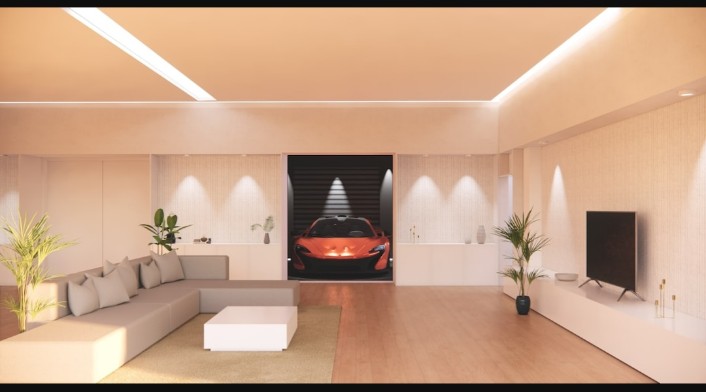Are you trying to figure out how to layer lighting in your home? It can greatly improve your home, but you need the right lighting techniques to pull it off.
Doing this is fairly simple if you know how to do lighting design for a room and the different types of lighting you can use. The key is knowing how to effectively mix lights from different sources.
Read on to learn tips about layered lighting in your home.
Contents
Basic Layered Lighting
Layering your home’s lighting can help to create a cozy and inviting atmosphere that sets the perfect mood for spending time with friends and family.
Ambient lighting should be your main source of light, providing an overall illumination to a room. Task lighting should provide a focused light for activities such as reading or cooking.
Finally, accent lighting is used to highlight particular features or objects, such as artwork. When choosing lighting, take into account aspects such as the size and shape of the room, the height of the ceiling, and the purpose of the room.
Maximizing Natural Light
Layering lighting in your home is one of the best ways to maximize the natural light in your living space. First, consider sidelight lamps that angle light toward the walls.
Mirrors and light fixtures should also be positioned to reflect light back into the room. Natural-hued wall colors can also help to bounce light around the room. Secondly, you should also establish ambient lighting using overhead ceiling fixtures.
Wall sconces and table lamps are useful for adding task and accent lighting to the space, too. Lastly, try to take advantage of natural light during the day. Sunlight can be used in combination with your light fixtures to both brighten and warm your home.
Incorporating Task Lighting
Task lighting is a necessity in a home to ensure that all areas of a room are lit up properly and evenly. Incorporating task lighting into your home’s lighting scheme involves thinking strategically about layering different kinds of lighting throughout the space.
To start, use natural light when possible, adding blinds or curtains to adjust how much natural light is entering the room. Then, layer in ambient lighting, such as a recessed or an overhead lighting fixture.
Finally, bring in the task lighting, like wall sconces, floor lamps, or desk lamps, to make sure that each area in the room is properly lit for its specific activity.
Adding Accent Lighting for Style
Adding accent lighting for style is a great way to layer lighting in your home. Accent lighting can be used to draw the eye to pieces of art or furniture. Ambient lighting, such as table and floor lamps, can be used to define different areas in the room.
Recessed lighting offers bright illumination when needed. Check out recessed lighting can sizes here. For a more dramatic effect, use track lighting to put light on any specific portion of the room that needs highlighting.
Wall sconces are a great way to highlight walls or specific areas. Lastly, up-lighting or task lighting are excellent options for cultivating the perfect balance of layers of light.
All About Layered Lighting
Layered lighting is an easy and effective way to dramatically improve the look and feel of a room. With the combination of different sources and styles of light, it is easy to create a space that is warm and inviting.
By taking the time to plan and layer your lighting, you can easily transform your space. Why not give it a try today?
Check our blogs for more!

